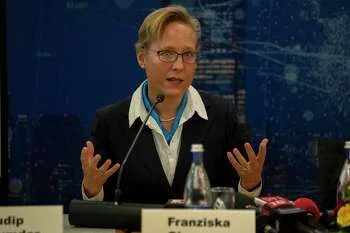“South Asia is on track to grow by 5.8% this year, and it’s leading the world in terms of economic growth. However, it’s important to note that this growth rate is still below what we saw before the pandemic,” stated the World Bank on Tuesday.
According to the most recent report by the World Bank on South Asia’s development, they anticipate a slight dip in growth to 5.6% in 2024 and 2025. This is due to the fading of post-pandemic rebounds and reduced global demand, which will put pressure on the region’s economic activity.
Franziska Ohnsorge, the World Bank’s chief economist for South Asia, highlighted that South Asia is outperforming all other emerging markets with a growth rate close to 6% this year. She mentioned, “While many other emerging markets are facing challenges like high inflation and interest rates, South Asia is making progress.”
However, it’s essential to keep in mind that this growth is slower than the levels seen before the pandemic. Ohnsorge emphasized that it falls short of meeting the development goals set by countries in the region.
The report highlights that despite some progress, South Asia still has a long way to go. Currently, the average income per person in South Asia is about $2,000, which is only a fifth of what people earn in East Asia and the Pacific region. While the current growth rates are promising, they are not enough for South Asian countries to reach a high-income status within a single generation. It’s important to note that the growth is not evenly distributed.
India, as the largest economy in the region, is expected to maintain a robust growth rate of 6.3% in the 2023-24 fiscal year. Similarly, countries like Maldives and Nepal are also projected to grow, thanks to a rebound in tourism.
However, the situation is less optimistic in some other countries. Bangladesh’s growth rate might slow down to 5.6%, and projections for Pakistan’s growth are only 1.7%, which is lower than the rate of its population growth, according to the World Bank. Sri Lanka, which experienced a severe economic downturn last year, is slowly recovering. However, the IMF recently decided not to release a second portion of funding, as they believed Sri Lanka hadn’t made sufficient progress in implementing economic reforms.
The World Bank has raised concerns about the high level of government debt in South Asian countries. In 2022, this debt averaged 86% of the region’s total economic output, which is higher compared to other emerging markets. This high level of debt could lead to an increased risk of countries not being able to repay their loans and could result in higher borrowing costs for them.
Additionally, South Asia’s economic outlook could be influenced by the slowdown in China’s economy. The region is also at risk of experiencing more severe impacts from natural disasters due to climate change, which has made such events more frequent and intense.
Franziska Ohnsorge, the World Bank’s chief economist for South Asia, suggested that governments in South Asia have an opportunity to improve their fiscal situations by embracing an energy transition. This transition could create job opportunities, reduce the dependence on energy imports, and decrease pollution levels.
The World Bank pointed out that nearly one-tenth of the region’s workers are engaged in jobs that contribute to pollution, with many of these jobs held by informal and lower-skilled workers who are more vulnerable to changes in the job market. South Asia currently lags behind other regions in adopting energy-efficient technologies and creating environmentally friendly job opportunities, Ohnsorge added.
The World Bank recently released its latest report on India’s development, and despite a tough global economy, India managed to be one of the fastest-growing major economies in the previous fiscal year, with a growth rate of 7.2%. This impressive growth rate placed India second among the Group of 20 countries, nearly double the average growth rate of emerging market economies.
However, looking ahead, the global economic landscape remains challenging due to factors like high interest rates, geopolitical tensions, and sluggish global demand. As a result, overall economic growth is expected to slow down in the medium-term. The World Bank predicts that India’s GDP growth for the current fiscal year will be around 6.3%. This slowdown is primarily attributed to external factors and the decreasing pent-up demand following the COVID-19 pandemic.





